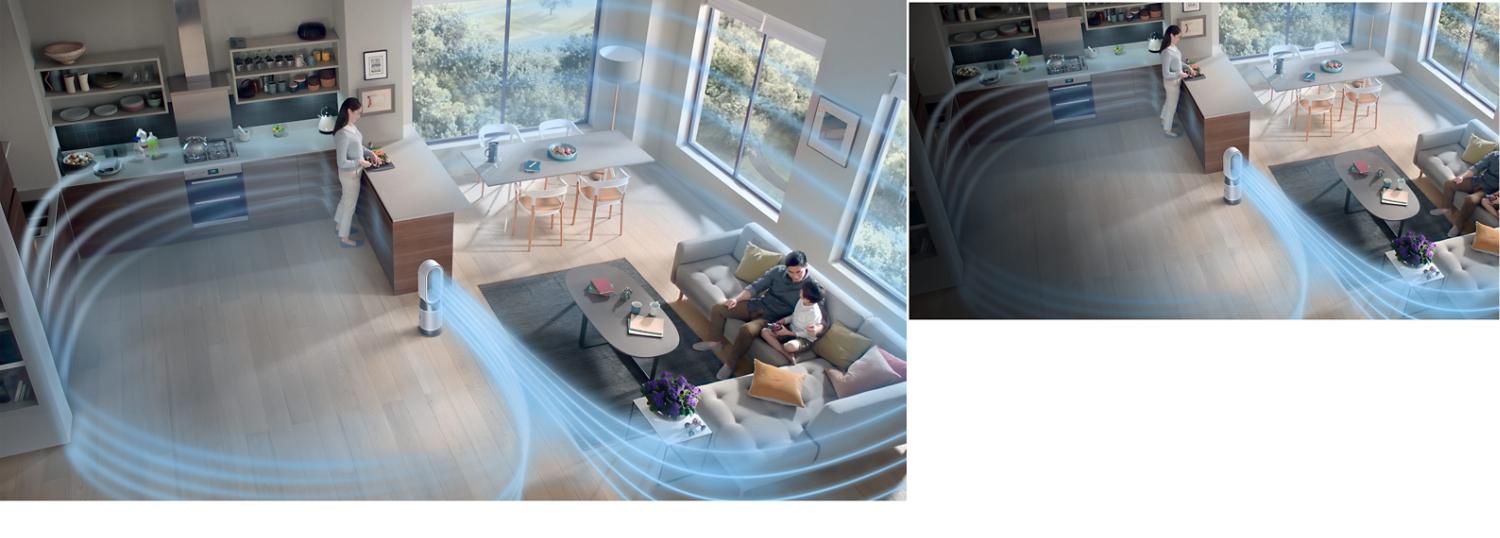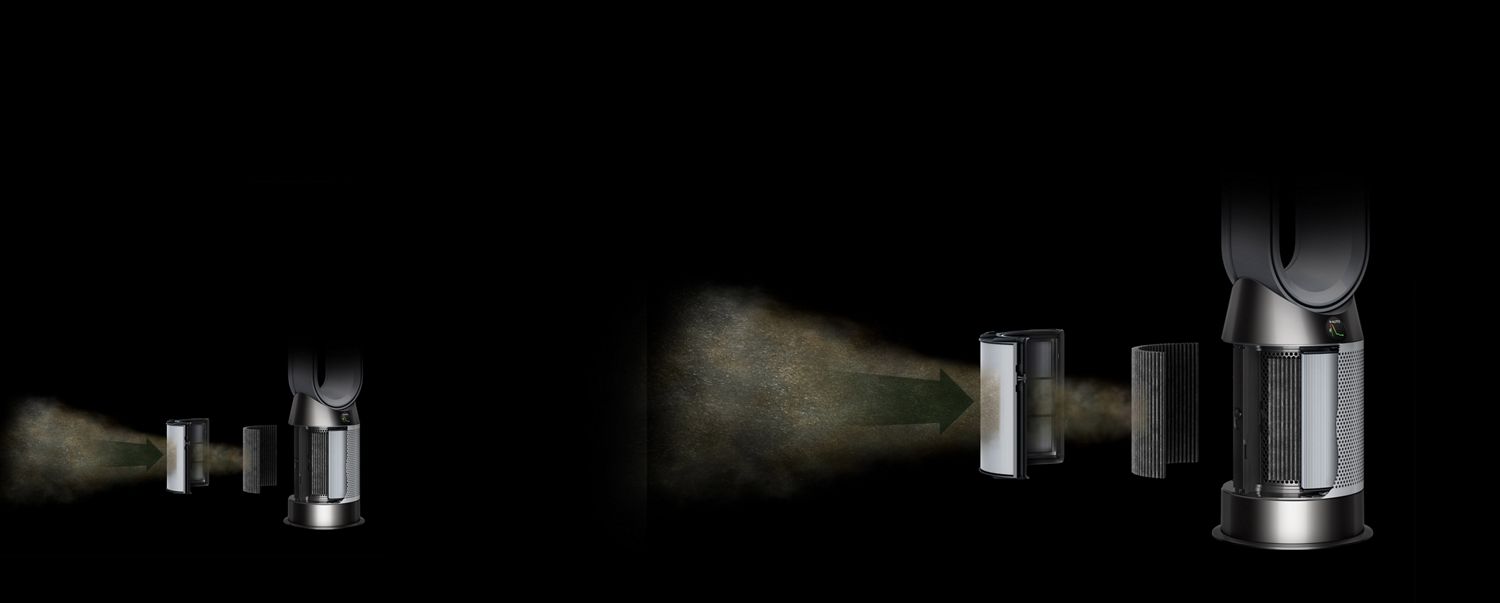

Choose your model
Captures common household pollutants
-
Pet dander, pollen and dust
PM10
-
Industrial emissions
PM2.5
-
Odors
Household fumes and cooking
-
Nitrogen dioxide
Gas stoves and car exhausts
-
Benzene and VOCs
Cleaning products and candles



Everything you need on hand
-
Expert guides and content
From quick-start and how-to guides to understanding different modes and screens. All tailored to you and your machines.
-
Automated filter alerts
You'll never need to worry about when it's time to replace your filter, as the LCD on your purifier will let you know. Helping your machine to always perform at its best.
-
Tailored 24/7 support
Maintenance advice and troubleshooting, when you need it. You can also activate tailored machine support, direct to your inbox.
-
Allergens
An allergen is a substance that can cause an allergic reaction by triggering the body’s immune system. Common indoor allergens include pet dander and pollen.¹⁰
-
Bacteria
Microscopic, single-celled organisms that can exist in their millions, in every environment. Not all bacteria are harmful, but some can have adverse effects, such as E. coli.¹⁰
-
Benzene
Benzene is colorless, flammable liquid produced by both natural and man-made processes. It’s a natural part of crude oil, gasoline, and cigarette smoke. Indoors, it comes from products such as glues, paints, furniture wax, and detergents.
-
Carbon dioxide (CO₂)
A colorless greenhouse gas, which comes from the extraction and burning of fossil fuels. Increased CO₂ levels can impact cognitive function.
-
Formaldehyde
This colorless, flammable gas is used in some building materials and household products. Sources can include some fabrics found in flooring and furniture, glues, paints, varnishes, air fresheners, and household cleaners.
-
HEPA 13
HEPA (High Efficiency Particulate Air) is an air filter efficiency standard and a measure of a filter’s performance. To achieve this standard, filters must meet a minimum of 99.95 per cent particle removal at the most penetrating particle size.
-
Humidification
A process of increasing air moisture content through the addition of water vapor or steam. Humidifiers can add moisture to the air in dry conditions, creating a more comfortable indoor environment when needed.
-
Microns
Airborne particles are usually described in microns. One micron is equal to one-millionth of a meter. The human eye can see debris and dust that are approximately 25 microns in size.
-
Nitrogen dioxide (NO₂)
Nitrogen dioxide is a liquid below 70.2°F and a gas at higher temperatures. It is toxic to humans in both states in high concentrations. Gas stoves and space heaters are the most common indoor sources of NO₂ emissions. Other sources include improperly vented furnaces and water heaters.
-
Pet dander
Pet dander is made up of tiny particles of skin, saliva and urine, shed by animals with fur or feathers. Pet dander lingers in the air before settling on surfaces such as furniture, bedding, and fabrics. Exposure to these airborne particles can trigger allergies.¹⁰
-
Particulate matter (PM)
Particulate matter contains microscopic solids or liquid droplets, measured in microns. Indoor PM can be generated through many day-to-day activities such as cooking, cleaning, and the burning of candles and fires.
-
Purification
The process of reducing unwanted contaminants. Air purification is intended to remove airborne pollutants. Depending on the method, air purification can remove dust, allergens, or viruses.10
-
Volatile organic compounds (VOCs)
Volatile organic compounds are potentially harmful gases found in many household products. Common sources include paints, varnishes, air fresheners, cosmetics, and cleaning products.
-
Pollen
Pollen is a powdery substance released from seed plants as part of their reproduction process. It typically appears from trees in the spring, grasses in the summer, and weeds in the autumn. Pollen grains are among the most common allergens.¹⁰
-
Aspergillus mold
A common name for a visible group of fungi, mold thrives wherever there is dampness – sending out millions of spores into the air. Exposure to mold occurs via inhalation, skin contact, or ingestion.¹⁰
-
-
Frequently asked questions
The Dyson Purifier Hot+Cool™ Gen1 machine has the same core capabilities found in our purification products. The Dyson Purifer Hot+Cool™ Gen1 machine, senses pollutants PM2.5 and PM10 - filtering all pollutants except formaldehyde. Although this machine doesn’t have app connectivity, the remote control allows you to easily adjust settings on the machine.
Dyson engineers are perfectionists. Channeling our relentless dissatisfaction, we have re-engineered the Dyson Purifier range to be fully sealed to HEPA H13 standard.⁹ Capturing 99.97% of fine particles and preventing pollutants from leaking back into the air you breathe.
We recommend replacing the HEPA+Carbon filter every 12 months. That's because over time, filters can get clogged with pollutants, and even let unpleasant odours back into the room. The machine will alert you when it’s time to change filters. A filter life reading can be found on the LCD screen. The catalytic filter never needs replacing.

▴The MyDyson™️ app is only compatible with select Dyson products. For a list of compatible products, please click here.
*Allergens refers to nonliving material.
²Gas capture rates may vary
³Fan; not air conditioning unit
⁸Tested in maximum setting for air projection, tested in Auto mode for purification coverage, tested for room heating per relevant Dyson method DTM961.
⁹Particle challenge by DEHS oil specified in EN1822 within a chamber specified in ASTM F3150.
¹⁰Not intended as a product claim. Refer to individual Dyson models for specific capture claims.
















